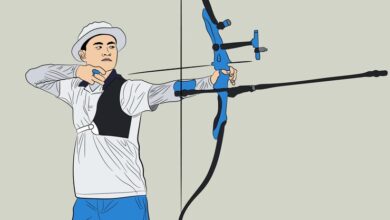What Are Dart Boards Made Of?

What Are Dart Boards Made Of? If you have ever been curious about the materials used in producing dart boards, you have come to the right place.
Dartboards have a rich history and have significantly evolved over the years. Nowadays, they are carefully made for durability, performance, and safety.
What Are Dart Boards Made Of? Dartboards are typically made of sisal fibers, a natural material derived from the agave plant.
Sisal fibers are used to create dart boards. These fibers are compressed and bound together using a strong adhesive, which creates a durable surface for the darts to penetrate. Sisal is a popular choice for dart boards due to its healing ability.
The fibers of the board close up when a dart is removed, leaving no visible holes. This self-healing property ensures that the board can withstand numerous dart impacts without significant wear and tear. an withstand numerous dart impacts without significant wear and tear.
What Is The Dartboard-Making Process?
The process of making a dartboard involves several steps to ensure that a durable and high-quality product is created.
Firstly, a compressed sisal fiber fragment is selected as the main component due to its remarkable self-healing ability.
The dartboard’s unique round shape is achieved by carefully packing sisal fibers and adhering them to a backboard.
To strengthen and increase stability, a metal ring is added to the outside edge of the structure. Then, the dartboard’s surface is painted meticulously with a thin layer of paint, frequently in the eye-catching colors of red, white, and black.
Wire dividers are carefully placed to divide the various scoring regions, ensuring accuracy during gameplay. Lastly, a central bullseye and numbered rings mark the target areas. Each stage of the manufacturing process undergoes rigorous quality control to meet industry standards.
This intricate and detailed process of making a dartboard results in a visually appealing and durable product that can withstand countless throws, making it an essential component of the popular game of darts.
What Is The Best Dartboard Material?
When choosing the best material for a dartboard, a few options exist. While conventional materials like sisal and cork have long been preferred, technological advancements have made newer options like bristle and electronic dartboards possible.
Sisal is a material used for dartboards that is highly valued for its durability and self-healing qualities. It is derived from the fibers of the agave plant.
It stops excessive wear and tear and lets the dartboard hold its shape over time. On the other hand, Bristle dartboards have a surface that is impervious to penetrations and holes since they are composed of compressed sisal fibers.
Electronic dartboards have also become increasingly popular due to their interactive features and ease of use.
They typically use soft tip darts that stick to a flat surface covered with tiny holes, registering the scores electronically. Ultimately, the best dartboard material depends on an individual’s preferences, playing style, and budget.
How Long Should A Dartboard Last?
The lifespan of a dartboard is predominantly determined by the quality of materials used and the frequency of use. Dartboards made of high-quality sisal fibers can last for several years if they are properly taken care of.
However, due to the frequent hits from the darts, the dartboard can eventually show signs of wear and tear over time. The type of darts used can also have an impact on the lifespan of the dartboard, with steel-tipped darts often causing more damage than soft-tipped ones.
Regular care can help prolong the lifespan of the dartboard. This includes turning the dartboard frequently to distribute the wear evenly and clearing out embedded darts regularly. Additionally, protecting the board from moisture and high temperatures can help extend its lifespan.
As a general rule of thumb, a well-maintained dartboard can last anywhere from one to five years, depending on the factors mentioned above.
FAQS:
What is sisal fiber?
The leaves of the agave sisalana plant are a natural source of sisal fiber. Due to its reputation for strength and self-healing in the event of a puncture, it is the perfect material for dartboards.
How are sisal fiber dartboards made?
Layers of sisal fibers are compressed and secured with a metal ring or wire for reinforcement to create sisal fiber dartboards. The dense packing of the fibers produces a firm surface for dart play.
Are all dartboards made of sisal fiber?
No, other materials, like cork, are also utilized in constructing dartboards, even though sisal fiber is the most widely used material.
What are cork dartboards made of?
Compressed cork is used to make cork dartboards. Cork is a robust and lightweight material that works well for holding darts.
Are there any synthetic materials used for dartboards?
Indeed, dartboards can be made of synthetic materials like paper or fibers. However, compared to cork or sisal fiber dartboards, these materials are usually considered lower quality and less durable.
Conclusion:
Dartboards are crafted with precision and attention to detail to ensure an exceptional playing experience. The type of material used in making the board determines its durability and performance. Whether you prefer a traditional sisal dartboard, a magnetic one suitable for beginners, or an electronic dartboard with advanced features, knowing the materials used can help you select the right one for your skill level and maintain it properly.
Regardless of whether you are an amateur or a professional player, investing in a high-quality dartboard made from genuine materials is crucial for enjoying the game to its fullest potential.


